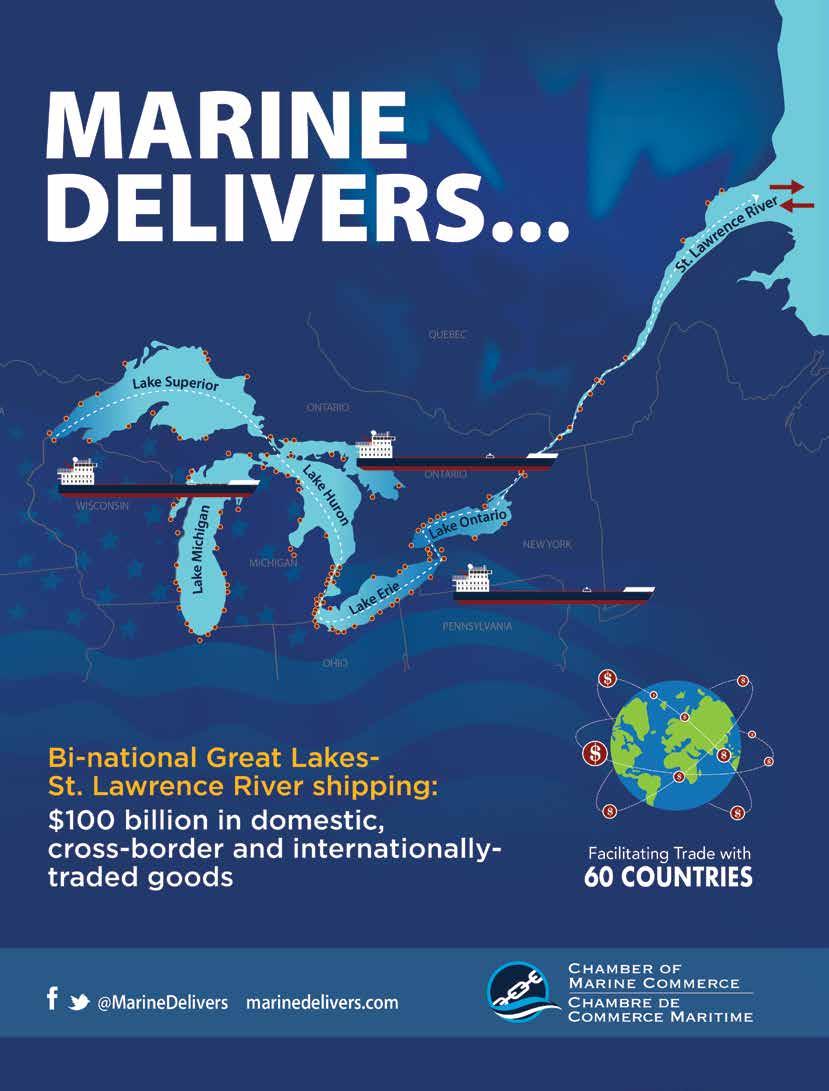
2 minute read
Laurentia: Quebec’s bold container project
In a bold move towards cargo diversification, the Port of Quebec has launched a major project called Laurentia to establish a terminal that would significantly broaden its reach on the continent’s industrial heartland by capitalizing on its deep water to attract large container ships.
With the opening of an expanded Panama Canal, a new generation of bigger vessels is rapidly appearing on the Atlantic seaboard. The Port of Quebec considers that with water depth of 15 metres, it is strongly positioned to take advantage of the changing landscape in commercial shipping.
As Mario Girard, president and CEO of the Quebec Port Authority, puts it: “Quebec City must get on board and leverage its strategic location on the shortest route between Europe and the St. Lawrence-Great Lakes region, which is home to over 40 per cent of the U.S. manufacturing industry.” Currently, Montreal is the only container port in the province of Quebec. The Port of Quebec, currently handling 28 million metric tons of cargo, has been known for decades chiefly as a bulk shipping gateway on the route linking the Atlantic Ocean and the Great Lakes. A water depth of 15 metres at low tide allows for the transshipment of cargo between deep-draft ocean vessels and smaller ships (Lakers) able to travel upriver through the St. Lawrence Seaway locks into the Great Lakes – thereby penetrating a market of more than 100 million consumers, including the U.S. Midwest. The overall business model could undergo important transformation within a few years if all goes according to plan.
Girard unveiled the project in late 2017. And he quickly followed this up by hiring as the lead adviser Don Krusel, who had earned a widelyacclaimed reputation by piloting, as chief executive, the metamorphosis of the remote, struggling Port of Prince Rupert in British Columbia into a fast-growing container port in North America.
Costing an estimated $775 million, with a completion date target of 2024, Laurentia would extend the wharf line at the port’s Beauport zone by 610 metres, connect with existing road and rail networks, and house a 17-hectare container yard.
With officials continuing their efforts to attract container shipping lines as potential customers, the ambitious project has been reinforced by last May’s announcement by the Quebec Port Authority of a long-term agreement with Hutchison Ports, the world’s largest terminal operator (network of 52 ports) and CN, a leading Canadian railway with a network extending right to Mexico. The project will be financed primarily through the joint investment of the three
partners. And the port is having ongoing discussions with federal and provincial governments to complete the financing package. According to a study from KPMG, for the construction phase alone, the project will generate $500 million in economic benefits and an average of 1,267 jobs a year. Ultimately, the project will generate $84 million in economic benefits a year and will create nearly 800 jobs, including 500 direct ones, in Québec.
Meanwhile, before construction can begin, the project must receive regulatory approval in Ottawa from federal authorities. At the time of writing, the project was still under an environmental assessment process with the Canadian Environmental Assessment Agency. n











